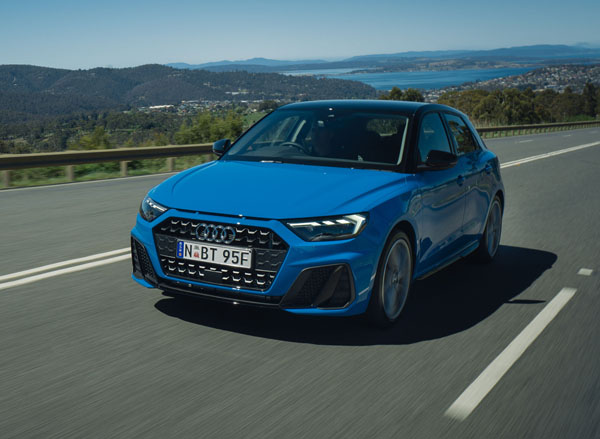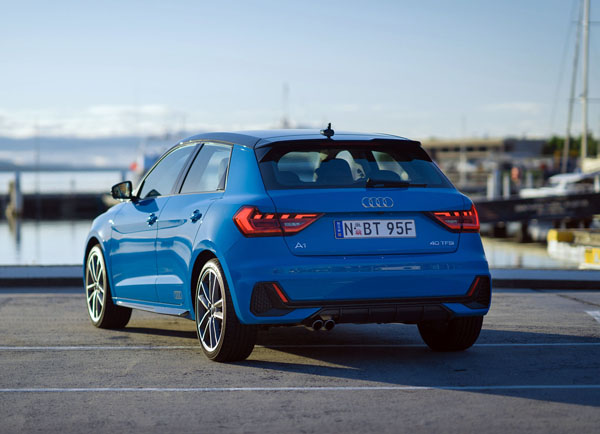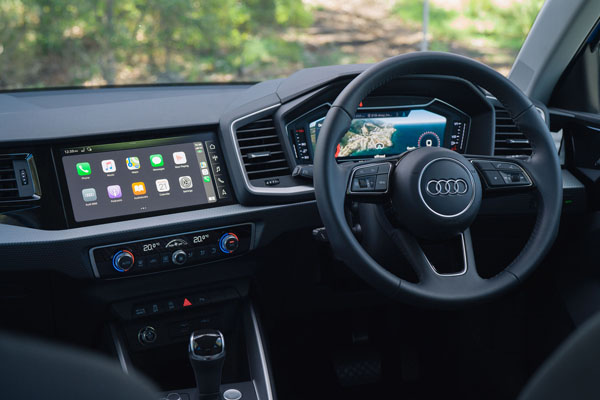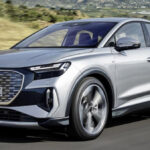 Any Audi A1 fan – and there are many – who does not like the latest version of the popular small hatchback has only themselves to blame, for the German manufacturer spent pots of money and tons of time talking to potential buyers about their needs and wants.
Any Audi A1 fan – and there are many – who does not like the latest version of the popular small hatchback has only themselves to blame, for the German manufacturer spent pots of money and tons of time talking to potential buyers about their needs and wants.
And like the genie of the lamp, it then set about obeying their wishes. The result is the MY20 Audi hatchback (Sportback in Audi speak), which, due to high demand around the world, has belatedly made landfall in Australia.
Shawn Ticehurst, Director of Product Planning and Pricing at Audi Australia, says the new A1 will be a disrupter in the premium compact segment. “Its predecessor opened our eyes to the owners that buy into the Audi brand at this point in our range, he says.
“The new A1 is much bigger and its innovative technology has the ability to seamlessly integrate with our modern world.”
The all-new A1 Sportback comes with three petrol TFSI drivetrains, all with direct injection and turbocharging, linking maximum performance with fuel efficiency.
The entry-level 30 TFSI is powered by a new 1-litre three-cylinder engine producing 85 kW of power and 200 Nm of torque. Fuel consumption, on the combined urban / highway cycle, is put at 5.4 litres per hundred kilometres.
The mid-range 35 TFSI variant is powered by a new 1.5-litre four-cylinder engine with innovative design made of composite material. Peak power is 110 kW and top torque of 250 Nm from a low 1500 rpm. Fuel consumption is rated at 5.8 litres per hundred kilometres.
The trio is topped off by the 40 TFSI S line, featuring a 2-litre four-cylinder motor pumping out 147 kW and 320 Nm. Boasting a zero-to-100 km/h time of 6.5 seconds and top speed of 235 km/h, fuel efficiency is a claimed 6.4 litres per hundred kilometres.
The 30 and 35 TFSI models are mated with a seven-speed S tronic dual clutch automatic transmission, the 40 TFSI sports a six-speed version tuned for high performance.
The A1 Sportback is offered with the Audi service plan package, at $1480, for three years, or $1990 for five.
On a drive in each of the three variants in perfect driving conditions in Tasmania the 35 TFSI and 40 TFSI ran true to form, with the six and seven-speed gearboxes slipping between cogs seamlessly.
The real surprise, however, was the 30 TFSI, its three-cylinder engine perfectly tuned to the seven-speed transmission and not wanting for performance, especially when overtaking.
Ride and handling were top notch too, all the cars showing little tendency to come unstuck even when pushed to the limit on fast bends and undulating country roads.
All variants were susceptible to wind noise from around the exterior mirrors and varying amounts of road noise, depending on tyres fitted and bitumen surface.
The new A1 Sportback lives up to expectations of a premium compact vehicle with a high level of standard equipment from the 30 TFSI with its 16-inch alloy wheels, powered and heated outside mirrors, DAB+ digital radio, with six-speaker audio, multi-function steering wheel and cruise control with speed limiter.
The 35 TFSI rolls on 17-inch alloys and has convenience key, wireless smart phone charging and auto dimming interior mirror, while the 40 TFSI adds sporty 18-inch wheels, S line exterior, LED headlamps with dynamic indicators, red brake calipers, Audi drive select, dual zone climate control and sports front seats.
The 30 and 35 TFSI models can be complemented with a Style package ($2990) adding LED headlamps with dynamic indicators, alloy wheels one size up, plus other goodies. Technik and Premium Plus packages are also available for some models.
The A1 Sportback has earned a five-star safety rating thanks to a suite of innovative driver assistance systems designed to protect occupants as well as pedestrians and cyclists.
These include autonomous emergency braking, Audi lane departure and advanced pre-sensing features. There are six airbags, plus Isofix points on the outer rear seats.
Parking in tight spots is made easier with front and rear sensors and reversing camera standard across the board. Semi-autonomous park assist is available on the top 40 TFSI model.
Infotainment and connectivity are paramount, with the latest technology available from the entry level up. Apple and Android interfaces are on offer, while the Audi MMI system is displayed and controlled via an 8.8-inch touchscreen and driving info projected clearly on a 10.25-inch digital instrument cluster.
Available with the 35 TFSI and standard on the 40 TFSI is MMI Navigation plus, with 10.1-inch touchscreen, Audi virtual cockpit, 3-D navigation with Google Earth mapping and wireless connectivity.
Audi connect plus uses online connection to the driver for such things as fuel pricing, parking information, weather and destination entry via Google maps on a smartphone, plus the ability to pinpoint traffic jams.
In Australia, this connects to the Telstra mobile network for data services, the cost being covered in the price of the vehicle for at least the first three years of ownership.
Audi says the second-generation A1 Sportback is roomier than its predecessor and, at 335 litres, has more luggage space. Behind the front seats, however, it leaves a bit to be desired.
Head room is okay, but legroom is lacking and the cargo area is a squeeze to take anything bigger than a couple of small travel bags, or minor shopping. The small door opening also creates some difficulty getting in and out of the back seat.
Audi says the target market is divided into the aspirational young, seeking a hatchback with the latest in automotive technology, and older folk downsizing to the A1 Sportback without giving up premium car polish. It is on sale now.
Despite a plethora of rivals, many for less money, there’s no denying the vehicle generally lives up to its A1 tag; it’s first class.
AT A GLANCE
MODEL LINE-UP
Audi A1 30 TFSI Sportback $32,350
Audi A1 35 TFSI Sportback $35,290
Audi A1 40 TFSI Sportback $46,450
Note: These prices do not include dealer or government charges. Contact your local Audi dealer for drive-away prices.













